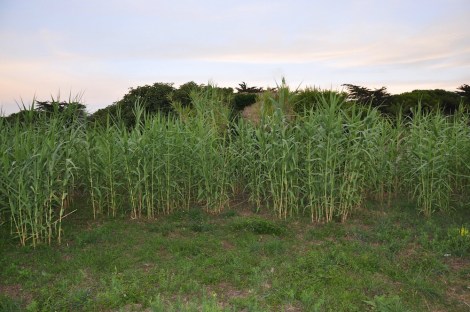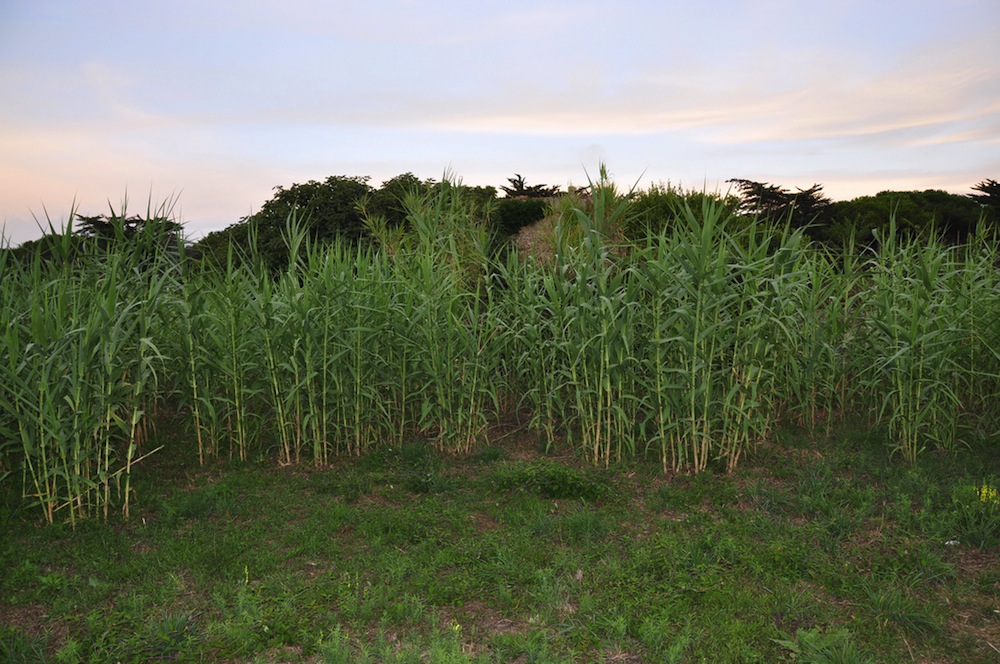Here’s another environmental incentive to ditch the car: That gas you buy at the pump could soon be helping towering invasive grasses wreak havoc on America’s ecosystems.
The EPA recently approved the use of giant reed and napier grass as biofuel ingredients under its Renewable Fuel Standard program. The program requires oil companies to blend a minimum amount of biofuel into the gasoline that they sell. To receive EPA approval under the program, fuel created from grass must produce 60 percent less greenhouse gas than does normal gasoline.
But in approving the use of the two grasses as feedstocks for biofuel, the federal government has begun promoting plantations that environmentalists warn threaten the American landscape and its native species.

douneikaGiant reed is a giant pest, but the EPA figures it could also be a giant tool in the fight against climate change.
Enviros are especially concerned about potential new plantations of giant reed, aka Arundo donax. This monstrous grass can grow two-inch wide stems and reach 20 feet in height. And once it begins wreaking havoc in the wild, the invasive grass can be an expensive (and energy-intensive) nightmare to remove. From a letter to the EPA [PDF] signed by dozen of environmental groups last year:
Arundo donax displaces native vegetation and negatively impacts certain threatened and endangered species such as the Least Bell’s Vireo. In the United States, Arundo donax is listed as a noxious weed in Texas California, Colorado, and Nevada. Additionally, it has been noted as either invasive or a serious risk in New Mexico, Alabama, and South Carolina. Once Arundo donax has invaded an area, control is difficult and costly. In California, costs range between $5,000 and $17,000 per acre to eradicate the weed. Other estimates put that cost as high as $25,000 per acre.
Following this letter and other complaints from environmentalists, the EPA postponed plans earlier this year to approve the two grasses as biofuels and made some adjustments. The EPA’s newly issued rule lays out regulations designed to reduce the risks of these invasive species escaping into the wild. From Biomass Magazine:
Biofuel producers utilizing the feedstocks will be required to demonstrate that growth of giant reed or napier grass will not pose a significantly likelihood of spreading beyond the planted area, or that the invasive risks are being managed and minimized through an EPA-approved Risk Mitigation Plan. The plan is to include means for early detection and rapid response to potential spread. It must also include best management practices, continuous monitoring and reporting of site conditions, and a plan for site closure, along with post-closure monitoring.
Those rules weren’t enough to satisfy critics, however. “EPA is recklessly opening a Pandora’s box,” said National Wildlife Federation lobbyist Aviva Glaser. “We want to move forward with homegrown sources of renewable energy, but by doing so, we don’t want to fuel the next invasive species catastrophe.”



